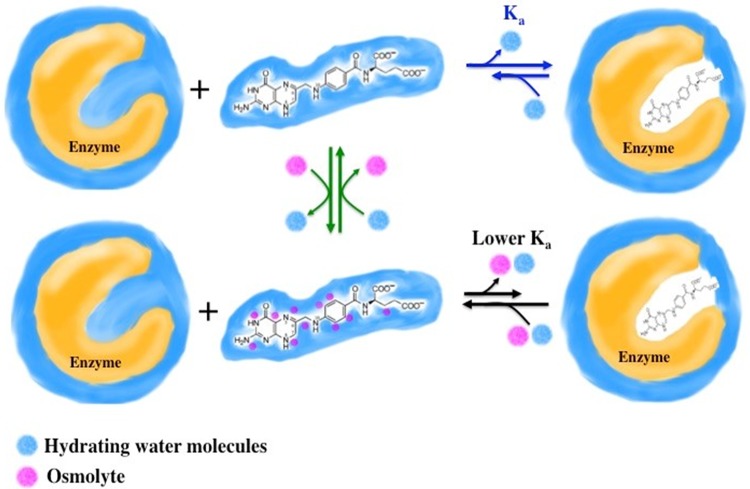FIG 1.
Model of osmolyte interaction with DHF that results in weaker binding to DHFR. For enzyme assays in buffer, DHF binds tightly to DHFR (target enzyme) and water (blue) is released. Added osmolytes (magenta spheres) interact weakly with DHF. For DHF to bind to DHFR, both osmolytes and water need to be released. While these interactions are weak, if the osmolyte-DHF interaction is stronger than the water-DHF interaction, then binding to DHFR is weakened. (Note that osmolytes may additionally bind to sites on the enzyme [data not shown] and affect activity). We have used high hydrostatic pressure as an orthogonal technique to examine the top row of the model (blue equilibrium arrows) (12). We have also used NMR and vapor pressure osmometry to monitor interactions between folate and osmolytes (middle column, green equilibrium arrows) (11, 13). All data sets are consistent with this model.

